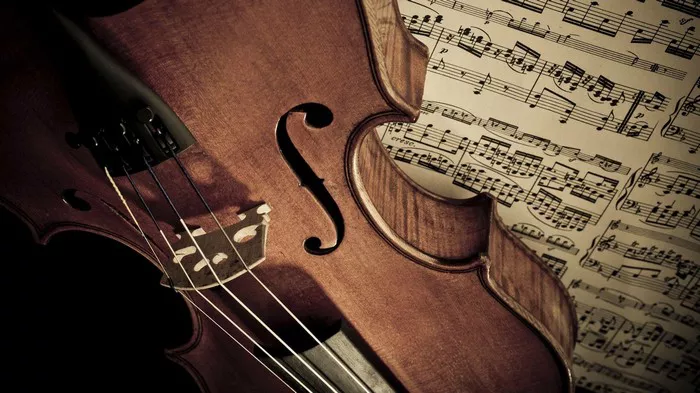Franz Schubert, one of the most prolific and influential composers of the 19th century, left an indelible mark on the world of classical music with his vast output of symphonies, chamber music, piano sonatas, and lieder. Among his final compositions, the collection known as the “Schwanengesang” or “Swan Song” stands as a poignant testament to his genius and serves as a powerful reflection on mortality, love, and longing. In this article, we delve into the significance of Schubert’s Swan Song, examining its historical context, musical characteristics, and enduring legacy.
A Prelude to Farewell: Historical Context
Schubert composed the songs that would come to be known as the Swan Song during the last year of his life, a period marked by illness and personal turmoil. In 1828, at the age of 31, Schubert was grappling with advanced stages of syphilis, a disease that would ultimately claim his life. Despite his declining health, Schubert continued to compose with unwavering dedication, pouring his innermost thoughts and emotions into his music.
The collection we now refer to as the Swan Song was not originally conceived as a unified cycle by Schubert himself. Instead, it comprises the final 14 songs he composed, set to texts by various poets including Ludwig Rellstab, Heinrich Heine, and Johann Gabriel Seidl. These songs were published posthumously as a single collection under the title “Schwanengesang” by Schubert’s publisher Tobias Haslinger in 1829, shortly after the composer’s death.
The Melancholy Beauty of Schubert’s Lieder
At the heart of Schubert’s Swan Song lies his unparalleled gift for setting poetry to music, a skill that earned him the title of the “father of the German Lied.” Each song in the cycle encapsulates a distinct mood and narrative, ranging from tender love songs to introspective reflections on loss and despair.
One of the most renowned songs in the cycle is “Ständchen” (Serenade), based on a poem by Ludwig Rellstab. In this exquisite piece, Schubert evokes the nocturnal atmosphere of a serenade through cascading arpeggios in the piano accompaniment, while the vocal melody soars with longing and passion. Through subtle shifts in harmony and rhythm, Schubert captures the delicate nuances of Rellstab’s poetry, infusing the music with a sense of wistful yearning.
Another highlight of the Swan Song is “Der Doppelgänger” (The Doppelganger), inspired by Heinrich Heine’s haunting poem of the same name. Here, Schubert delves into the realm of the supernatural, as the protagonist encounters his own ghostly doppelganger lamenting outside his former lover’s house. Through the use of dissonant harmonies and eerie chromaticism, Schubert creates a chilling atmosphere that mirrors the protagonist’s inner turmoil and existential dread.
A Testament to Musical Mastery
In addition to its profound emotional depth, Schubert’s Swan Song showcases his mastery of musical form and technique. Throughout the cycle, Schubert demonstrates a remarkable ability to marry text and music seamlessly, with each element enhancing the other to create a unified expressive whole.
One of the hallmarks of Schubert’s lieder style is his inventive use of piano accompaniment to depict mood and character. In songs like “Aufenthalt” (Sojourn), the piano takes on a prominent role, weaving intricate figurations that mirror the restless wanderings of the protagonist. Meanwhile, the voice soars above, conveying a sense of defiance and yearning against the backdrop of the piano’s tumultuous arpeggios.
Schubert also displays his mastery of song structure and form in the Swan Song, with each piece unfolding organically to reflect the emotional arc of the text. Whether through the strophic simplicity of “Die Taubenpost” (The Pigeon Post) or the through-composed complexity of “Abschied” (Farewell), Schubert crafts a musical narrative that resonates with profound emotional authenticity.
Legacy and Influence
Despite its origins as a collection of disparate songs, Schubert’s Swan Song has endured as one of the crowning achievements of the lieder repertoire. Its exploration of universal themes such as love, loss, and mortality continues to resonate with audiences and performers alike, ensuring its place in the pantheon of classical masterpieces.
Countless musicians have been drawn to the Swan Song, each bringing their own interpretation and insight to Schubert’s timeless music. From the pioneering recordings of Dietrich Fischer-Dieskau to modern interpretations by artists like Ian Bostridge and Matthias Goerne, the Swan Song remains a fertile ground for artistic exploration and discovery.
Conclusion
In conclusion, Schubert’s Swan Song stands as a testament to the enduring power of music to transcend the boundaries of time and space. In its exquisite beauty and profound emotional depth, it speaks to the universal human experience, inviting listeners to contemplate the fleeting nature of existence and the enduring power of love and art. As we continue to grapple with the complexities of the human condition, Schubert’s Swan Song serves as a poignant reminder of the transcendent power of music to illuminate the darkest corners of our souls and uplift our spirits in times of sorrow and despair.

